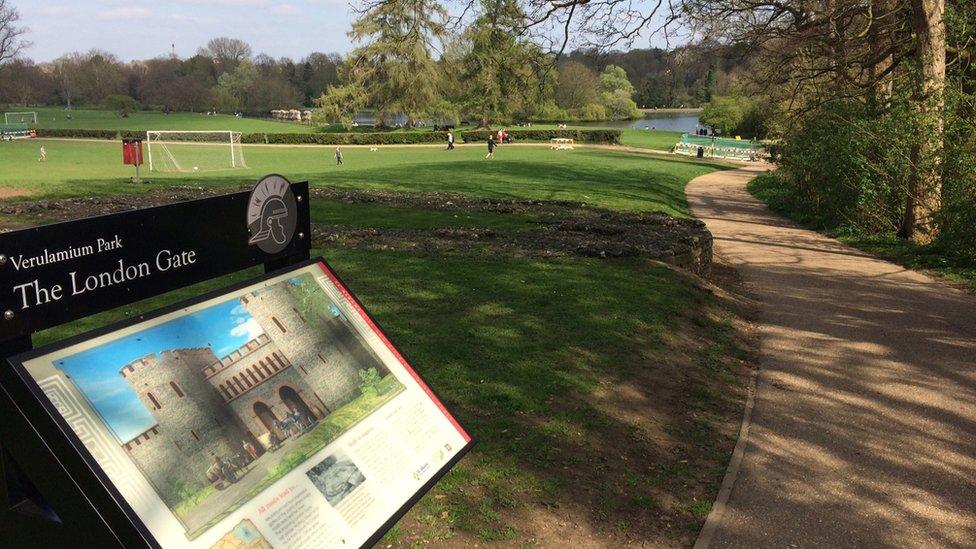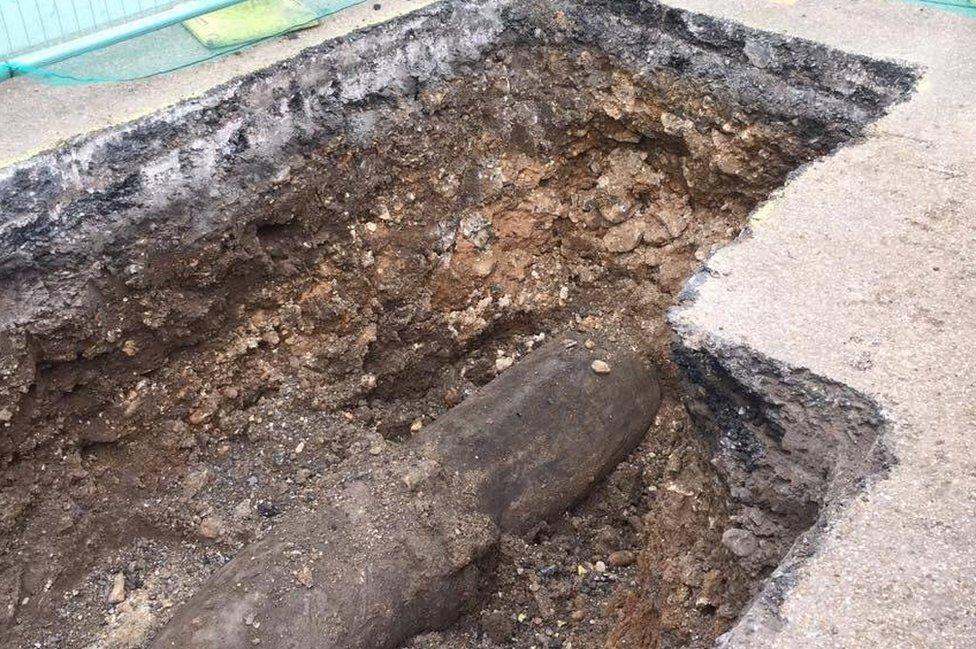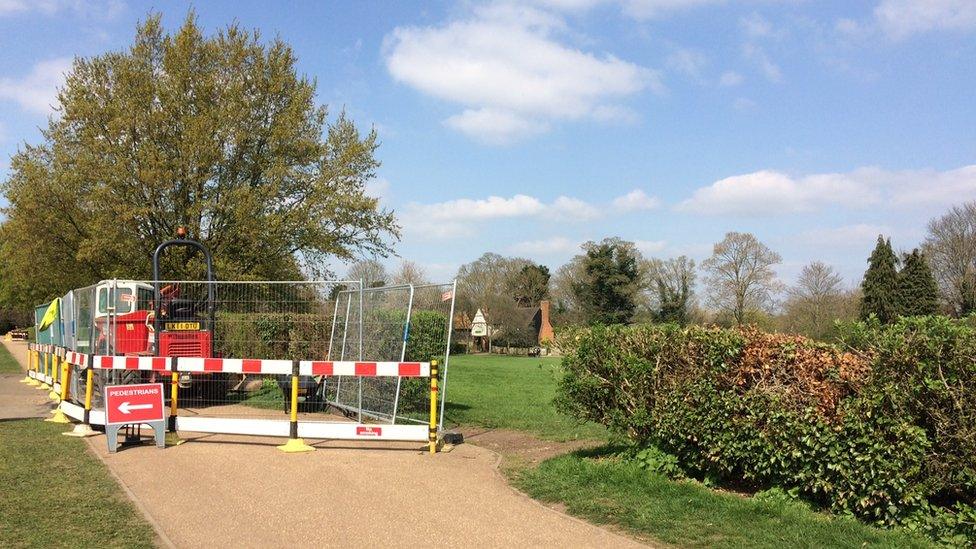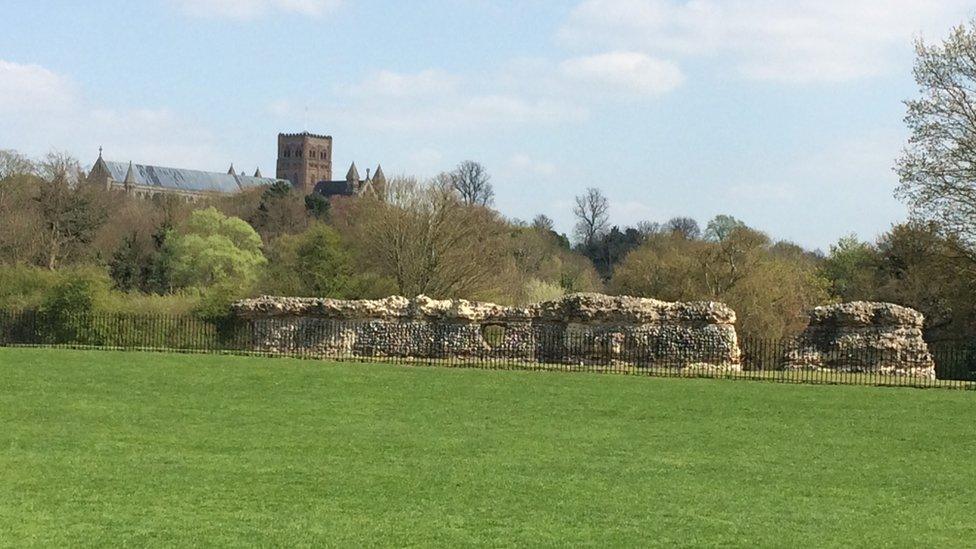'Significant' Roman finds made in St Albans
- Published

A hole dug by the National Grid just down the path from the main gate of the Roman town has revealed new information
"Significant" archaeological finds from the Roman town of Verulamium have been uncovered during gas main works in St Albans.
Verulamium was the third largest city in Roman Britain and has been mapped by various excavations over the years.
The new holes revealed the location of the corner of the town wall and a previously unknown house.
District archaeologist Simon West said: "It's like having a jigsaw... and now there are two more pieces."
He added: "Eventually [we will] see the whole picture and now we have new information that we can tie down rather than speculate."

The gas main cuts through the foundations of the corner of the Roman city wall
Verulamium was sited to the south west of what is now the city of St Albans in Hertfordshire.
Much of it was used for the construction of medieval St Albans and the Abbey and the rest is largely unexcavated and covered by park land.

A hole close to the museum car park has revealed a "high status" house where it was thought there had been a road
Mr West said: "It's significant in that we've found the very corner of the town wall as it bends round [from the gate house to the Roman wall above the lake].
"We knew it must be there but we'd never seen it and never known precisely where it was.
"Plus we've found no evidence that there was a corner tower which gives us more information."
Another dig unearthed evidence for the interior of a house in an area previously thought to have been the location for a road.
The remains of an Opus Signinum floor - made of tiles broken up into very small pieces - have been uncovered.
"In theory this should have been a cross roads and what we've got are the remains of a Roman town house," Mr West said.

Much of Roman Verulamium was used for the construction of medieval St Albans and the Norman Abbey
"There are individual pieces of Roman mosaic which suggests it was probably quite a high status house.
"We've now got to move the Roman road on [our] map to fit in the building."
The findings will now be recorded and the holes filled in, but finds such as pottery and animal bones will go to the Verulamium Museum.
For more stories and features about archaeology follow BBC England's archaeology Pinterest board here., external